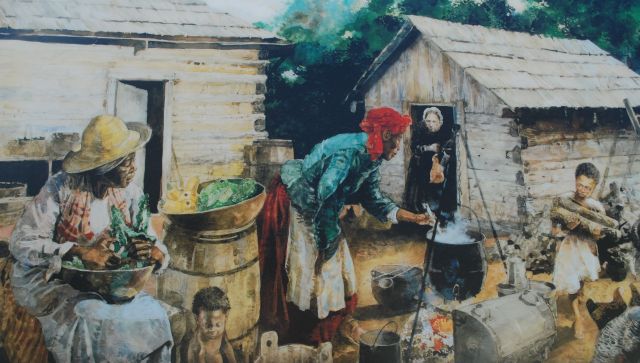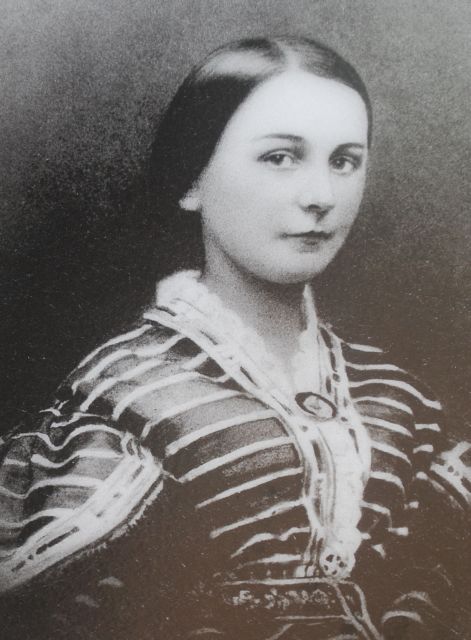Chatham Manor
On Tuesday before I visited Wegman’s, I finally got to see one of Fredericksburg many Historic Homes, Chatham Manor.
If you have been following our blog for a while, you may remember two of the decedents from the Conway Family got into an argument at Chatham over Nelly Madison, daughter of Ambrose Madison and niece to James Madison. Francis Fitzhugh Conway was the son of Captain Francis Conway and his wife, Elizabeth Fitzhugh Conway. Captain Conway was the last of the Conway family to own Belle Grove Plantation. He sold it in 1790 and moved to Mt. Sion Plantation just outside of Fredericksburg. The other man was William Thornton, a cousin of Francis Fitzhugh Conway. William and Francis share a common forefather in Francis and Alice Savage Thornton, second owners of Belle Grove Plantation.
Francis and William were both smitten with Nelly Madison. All three were visiting Chatham Manor for a Christmas party. Trying to impress her, Francis had purchased a new saddle (0r bridle, the story isn’t clear which) and had the groomsman place it on his horse. For some reason, the new saddle (or bridle) ended up on William Thornton’s horse instead of Francis’s. When the horses were brought around, Francis was angry. He challenged William to a dual the next month. The two met at Alum Springs Park and drew pistols. Both were wounded in the stomach area. William survived for two days and it is believe Francis died shortly after the dual.
Nelly Madison would go on to marry Dr. Willis and would be by the side of James Madison at his death. She was the last to speak to James Madison just before he died.
So you can see my interest in this Virginia Historic Home.
Here is some information I pulled from Wikipedia:
Chatham Manor is the Georgian-style home completed in 1771 by William Fitzhugh on the Rappahannock River in Stafford County, Virginia, opposite Fredericksburg The 1,280-acre estate included an orchard, mill, and a race track where Fitzhugh’s horses vied with those of other planters for prize money. Fizhugh named the mansion after the British parliamentarian William Pitt, 1st Earl of Chatham, who championed many of the opinions held by American colonists prior to the Revolutionary War.
Fitzhugh was a friend and colleague of George Washington, whose family’s farm was just down the Rappahannock River from Chatham. Washington’s diaries note that he was a frequent guest at Chatham. He and Fitzhugh had served together in the House of Burgesses prior to the American Revolution, and they shared a love of farming and horses. Fitzhugh’s daughter, Mary Lee, would marry the first president’s step-grandson, George Washington Parke Custis. Their daughter wed the future Confederate General Robert E. Lee.
Evidence supports that Thomas Jefferson and James Monroe also visited at Chatham, making a veritable “Who’s Who” of important Americans who stopped in to enjoy Fitzhugh’s hospitality. (A letter was recently discovered among Jefferson’s papers being catalogued at Princeton University; in that 1792 note, TJ writes, “…stopped at friend Fitzhugh’s in Fredericksburg…” He appeared to have been traveling between the new Capital City in Philadelphia and Monticello.)[citation needed] William Henry Harrison stopped by Chatham in 1841 on his way to be inaugurated as President.
Fitzhugh owned upwards of 100 slaves, with anywhere from 60 to 90 being used at Chatham, depending on the season. Most worked as field hands or house servants, but he also employed skilled tradesmen such as millers, carpenters, and blacksmiths. Little physical evidence remains to show where slaves lived; until recently, most knowledge of slaves at Chatham is from written records.
In January 1805, a number of Fitzhugh’s slaves rebelled after an overseer ordered slaves back to work at what they considered was too short an interval after the Christmas holidays. The slaves overpowered and whipped their overseer and four others who tried to make them return to work. An armed posse put down the rebellion and punished those involved. One black man was executed, two died while trying to escape, and two others were deported, perhaps to a slave colony in the Caribbean.
A later owner of Chatham,, who acquired the plantation in the 1850s, tried to free her slaves through her will upon her death. Her will provided that her slaves would have the choice of being freed and migrating to Liberia, with passage paid for, or of remaining as slaves with any of her family members they might choose.
Chatham’s new owner, J. Horace Lacy, took the will to court to challenge it and had it overturned. The court denied Coulter’s slaves any chance of freedom by ruling that the 1857 Dred Scott decision by the U.S. Supreme Court had declared that slaves were property—without choice—and not persons with choice.
Ellen Mitchell was the enslaved laundress at “Chatham” who knew of and counted on Mrs. Coulter’s promise of manumission. When Lacy’s court case took her freedom away, Mitchell was irate and loudly proclaimed how unfair this denial was. Lacy sold her to a slave trader, James Ayler, in Fredericksburg.
Ellen Mitchell continued to loudly protest the unfairness of her situation. Ayler gave her a 90-day pass to leave Fredericksburg in early 1860 on a tour during which she attempted to raise money to buy her freedom. He sent her on her way with the understanding that she would return. She gave speeches in Washington City, Baltimore, Philadelphia, New York, and Boston, raising enough money to return to Fredericskburg and buy not only her freedom but that of her children, as well. Ayler was so impressed that he also freed Mitchell’s mother. The Mitchell family moved to Cincinnati in the free state of Ohio. In the 1860 census, Ellen Mitchell was listed as running a laundry business. Today, some of her descendants still live in that area of Ohio.
Part Two – the Civil War Years tomorrow
Please visit our Facebook Fan Page
to see more Virginia Historic Homes!


















Thanks for your great posts about early Virginia history. It is spuring me on to better research my Turner and Ellzey ancestors from the 1700’s.
You are so welcome! You never know where they may lead! Thank you!
Who would have thought a slave-trader capable of such actions? Thank you so much for sharing your passion and research!
You are so welcome! Thank you for stopping by!
Hannah Coulter looks as if she used those old roller curlers in her hair. Too Funny. I think I attended a reception at the Manor when I was a student at MWC. Long ago. Dianne
They were a little different weren’t they! Oh how cool! It is a beautiful plantation. Thank you!
I love the picture of the slaves cooking over the fires. I collect all kinds of slavery items
Then this place would be up your alley!
Always great posts…sorry I didn’t make it for a visit but I’ll be back in July…hope to see you then
Thank you! No worries! We will be here when you get back! 😉
Thank you…looking forward to it
Well, a fat lot of good that duel did for either of those men! Over a piece of tack and a girl (but mostly the tack, it sounds like). It did manage to clear the way for a third guy, though.
What a history this place has had!
Haha, I just wonder what they thought as they lay dying. What a waste!